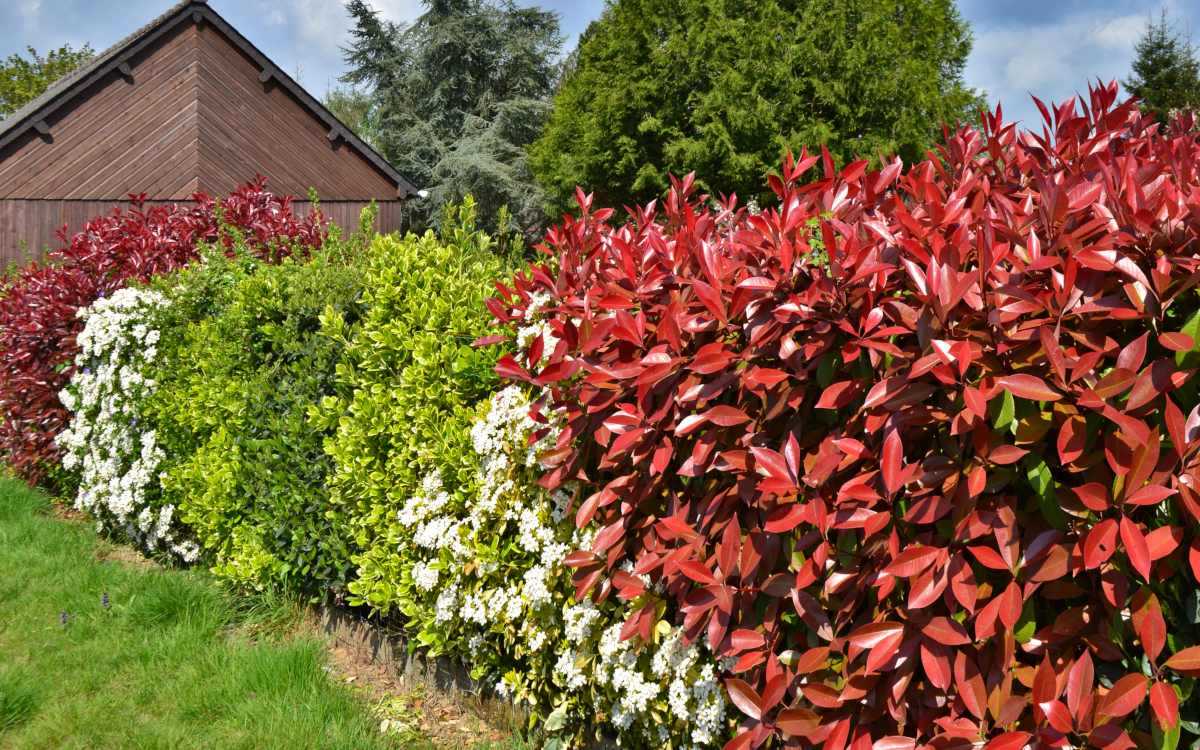- Understanding Apple Tree Pruning in Spring
- 1. Timing
- 2. Tools
- 3. Pruning Objectives
- 4. Pruning Techniques
- 5. Precautions
- Why Spring Pruning is Important for Apple Trees
- 1. Stimulates Fruit Production
- 2. Improves Air Circulation
- 3. Enhances Light Penetration
- 4. Controls Size and Shape
- 5. Removes Diseased and Damaged Wood
- Identifying Fruit Bearing Branches on Apple Trees
- 1. Look for Spur-Type Growth
- 2. Check for Bud Development
- 3. Observe Previous Year’s Fruit Growth
- 4. Consider Sun Exposure
- 5. Consult a Pruning Guide
- Identifying Growth Shoots on Apple Trees
- 1. Look for young, green branches
- 2. Check for buds and leaves
- 3. Measure the length of the shoots
- 4. Note the position on the tree
- 5. Look for signs of previous pruning cuts
- 6. Consider the time of year
- Pruning Techniques for Fruit Bearing Branches
- Pruning Techniques for Growth Shoots
- 1. Identifying Growth Shoots
- 2. Removing Unwanted Growth Shoots
- 3. Maintaining the Shape and Size of the Tree
- 4. Pruning Timing
- Tools and Equipment for Spring Pruning
- When is the Best Time to Prune Apple Trees in Spring
- Late Winter to Early Spring
- Avoid Pruning During Dormancy
- Consider Local Climate and Varieties
- Conclusion
- Tips and Considerations for Spring Pruning
- 1. Timing is Key
- 2. Prune to Shape
- 3. Identify Fruit and Growth Shoots
- 4. Thin Out Excess Growth
- 5. Consider Disease Prevention
- 6. Take Care with Cuts
- 7. Don’t Overdo It
- 8. Plan for Annual Pruning
- 9. Consider Hiring a Professional
- 10. Monitor and Evaluate
- Question-answer:
- How do I know when it’s time to prune my apple trees in the spring?
- What is the purpose of pruning apple trees?
- How should I prune the fruiting shoots on my apple tree?
- What are the signs that a shoot on an apple tree is a growth shoot and not a fruit shoot?
- Can I prune my apple trees during the summer?
- What tools do I need to prune my apple trees?
- Are there any specific tips for pruning apple trees that have just been planted?
- Video: Pruning An Apple Tree in 5 Easy Steps

Pruning is an essential task for apple tree care, especially in the spring when the tree is preparing to enter the growing season. Proper pruning helps to improve the tree’s structure, promote healthy growth, and increase fruit production. One important aspect of spring pruning is identifying the different types of shoots on the apple tree.
Fruit-bearing shoots, also known as fruit spurs, are important for apple production as they bear the blossoms and eventually the fruit. These shoots are usually short and stubby, and they emerge from the previous year’s growth. Identifying and preserving these fruit spurs is crucial as they will produce the majority of the apples for the current season.
Growth shoots, on the other hand, are long, vigorous branches that arise from the main branches or trunk of the tree. These shoots grow rapidly and extend into new growth areas. While growth shoots are important for shaping the overall structure of the tree, they do not bear fruit in the same year. Pruning away excessive growth shoots allows the tree to focus its energy on producing and maturing fruit.
By understanding the difference between fruit spurs and growth shoots, and knowing how to identify and prune them accordingly, you can effectively manage the growth and fruit production of your apple trees. This knowledge will enable you to create a well-balanced and productive tree that yields high-quality apples year after year.
Understanding Apple Tree Pruning in Spring
Pruning apple trees in the spring is an important task for maintaining the health and productivity of the tree. Proper pruning can help promote the growth of new fruiting wood, improve air circulation and sunlight penetration, and remove any dead or diseased branches. Here are some key points to understand about apple tree pruning in the spring:
1. Timing
It is generally recommended to prune apple trees in late winter or early spring, before the new growth begins. Pruning during this time allows the tree to heal quickly and reduces the risk of disease and pest infestation.
2. Tools
Make sure to have the right tools for apple tree pruning. These may include sharp bypass pruners, loppers for larger branches, and a pruning saw for thicker branches.
3. Pruning Objectives
When pruning apple trees, it is important to have clear objectives in mind. These may include:
- Removing diseased or dead wood
- Opening up the canopy to improve air circulation and sunlight penetration
- Promoting the growth of new fruiting wood
- Maintaining the overall shape and size of the tree
4. Pruning Techniques
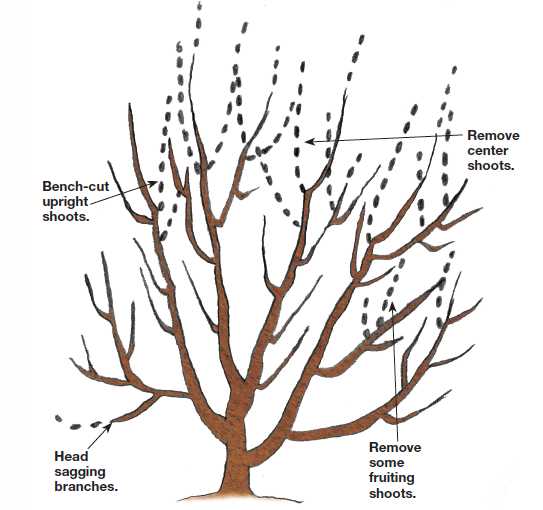

There are several pruning techniques that can be used on apple trees. These include:
- Thinning cuts: Removing entire branches back to the main trunk or a lateral branch.
- Heading cuts: Shortening the length of a branch by cutting to a bud or side branch.
- Renewal pruning: Removing older branches to encourage the growth of new, more productive wood.
5. Precautions
When pruning apple trees, it is important to take certain precautions:
- Inspect the tree for any signs of disease or pest infestation before pruning.
- Use clean tools to prevent the spread of disease.
- Make proper cuts, avoiding leaving stubs or making flush cuts.
- Remove any suckers or water sprouts that may be growing from the base of the tree.
By understanding the basics of apple tree pruning in the spring and following proper techniques and precautions, you can help ensure the health and productivity of your apple tree for years to come.
Why Spring Pruning is Important for Apple Trees
Spring pruning is an essential task for maintaining the health and productivity of apple trees. Pruning promotes the growth of new fruiting wood, improves air circulation and light penetration, and helps to prevent disease and pest infestations. Here are several reasons why spring pruning is important for apple trees:
1. Stimulates Fruit Production
By pruning in spring, you can encourage the development of new fruiting wood. Apple trees have a tendency to produce more vegetative growth if they are not pruned regularly. By selectively removing some of the branches and shoots, you can redirect the tree’s energy towards the production of high-quality fruit. Pruning helps to ensure good fruit set and improves the size and quality of the apples.
2. Improves Air Circulation
Proper air circulation is crucial for apple trees, as it helps to reduce the risk of fungal diseases such as apple scab and powdery mildew. When the branches and foliage of the tree are too dense, air becomes trapped, creating a moist and favorable environment for fungal pathogens. By pruning away excess branches and thinning out the canopy, you can improve air movement and ensure that the tree dries quickly after rain or dew.
3. Enhances Light Penetration
Apple trees require a certain amount of sunlight to ripen their fruit and promote photosynthesis. Pruning in spring helps to open up the canopy and allow more sunlight to reach the inner parts of the tree. Sunlight exposure is particularly important for developing fruit buds and ensuring that the apples receive sufficient energy for growth and flavor development.
4. Controls Size and Shape
Pruning in spring allows you to shape and control the size of your apple tree. By removing unwanted or misplaced branches, you can create a more manageable and aesthetically pleasing tree. Maintaining a balanced structure also reduces the risk of limb breakage and makes it easier to harvest the fruit.
5. Removes Diseased and Damaged Wood
Spring pruning provides an opportunity to remove any diseased, damaged, or dead wood from the tree. These branches can serve as a source of infection and pests, so it is important to remove them promptly. Pruning away diseased wood can help prevent the spread of diseases such as fire blight and canker, as well as minimize the risk of attracting insects and rodents to your apple tree.
Overall, spring pruning plays a crucial role in maintaining the health, productivity, and appearance of apple trees. By following proper pruning techniques and timing, you can ensure that your apple tree stays vigorous and continues to yield a bountiful harvest for years to come.
Identifying Fruit Bearing Branches on Apple Trees
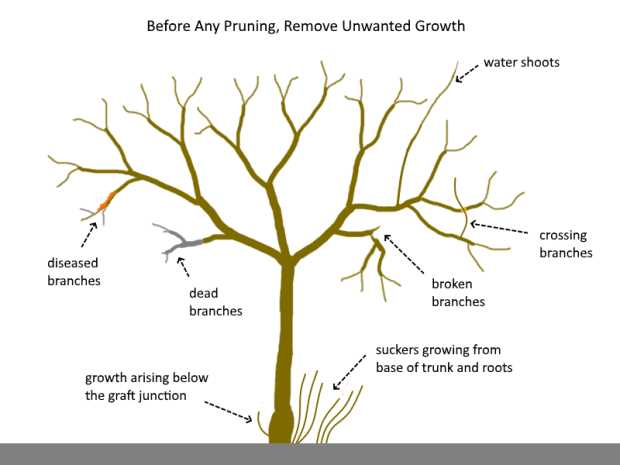

When pruning apple trees in spring, it is important to identify the fruit-bearing branches to maximize the tree’s productivity. Here are several ways to identify these branches:
1. Look for Spur-Type Growth
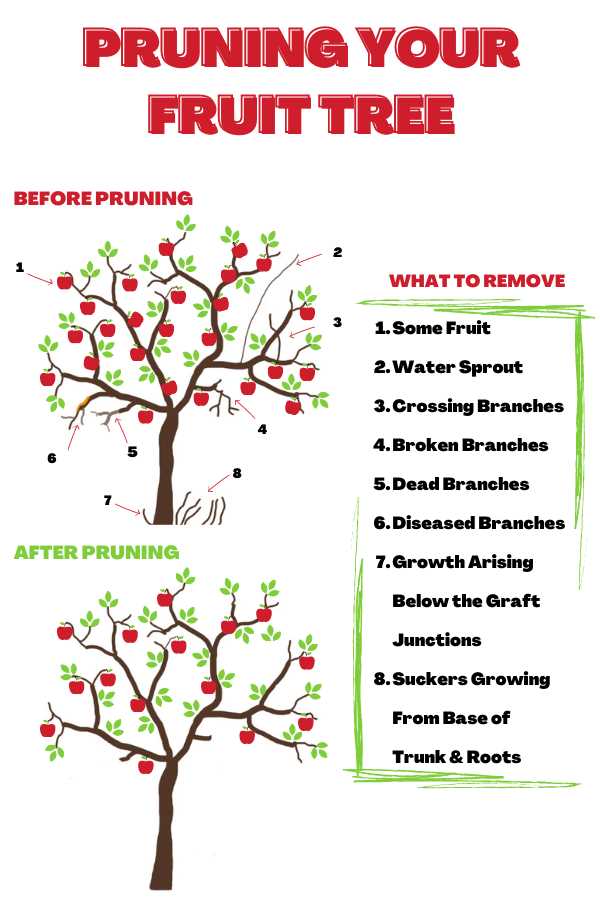

Spur-type growth refers to short, stubby branches that are thick and have many buds. These branches are often found on the older wood of the tree and are the primary fruit-bearing branches. They usually grow towards the inside of the tree and are more numerous in older trees.
2. Check for Bud Development
Another way to identify fruit-bearing branches is to look for the development of buds. Fruit-bearing branches have more visible and plump buds compared to non-fruiting branches. These buds will eventually open up to reveal flowers and later develop into fruits.
3. Observe Previous Year’s Fruit Growth
Inspect the branches for signs of previous year’s fruit growth. Fruit-bearing branches will often have small, dried-up fruit remnants or fruit spurs from the previous season. These remnants can help indicate which branches are likely to bear fruit in the upcoming season.
4. Consider Sun Exposure
Take note of the branches that receive the most sunlight. Fruit-bearing branches tend to be positioned in areas of the tree that get sufficient sunlight throughout the day. These branches will have better access to light and are more likely to produce fruit.
5. Consult a Pruning Guide
If you are unsure about identifying fruit-bearing branches, consult a pruning guide or seek advice from a knowledgeable arborist. They can provide specific information about your apple tree cultivar and its growth habits, helping you identify the branches that are most likely to bear fruit.
By identifying and retaining the fruit-bearing branches during spring pruning, you can ensure that your apple tree has optimal fruit production and a healthier overall structure.
Identifying Growth Shoots on Apple Trees
Growth shoots are the young, vigorous branches that develop on apple trees. They are important for the overall health and productivity of the tree. By identifying and managing growth shoots, you can help your apple tree grow strong and bear abundant fruit.
1. Look for young, green branches
Growth shoots are typically lighter in color and have a more vibrant green hue compared to older branches. They often appear in clusters and can be more pliable and flexible than mature branches.
2. Check for buds and leaves
Growth shoots will have buds or young leaves at their tips. These buds will eventually develop into flowers and fruit. These shoots may also have small, developing leaves along their length.
3. Measure the length of the shoots
Growth shoots are typically shorter in length compared to longer, established branches. They can range from a few inches to a foot long, depending on the variety and age of the tree.
4. Note the position on the tree
Growth shoots often emerge from the main trunk or larger branches of the apple tree. They may also develop from the base of the tree near the rootstock. Pay attention to the position of the shoots as they can indicate the overall health and vigor of the tree.
5. Look for signs of previous pruning cuts
Old pruning cuts can stimulate the growth of new shoots near the cut area. Look for branches that have been pruned in previous years and check for the presence of growth shoots in those areas.
6. Consider the time of year
Growth shoots are most prominent during the spring and early summer months, when the tree is actively growing. However, they can also develop throughout the growing season on healthy, well-maintained trees.
By identifying and properly managing growth shoots on your apple tree, you can ensure its continued health and productivity. Regular pruning and shaping of these shoots will help maintain a balance between vegetative growth and fruit production.
Pruning Techniques for Fruit Bearing Branches
Pruning fruit bearing branches is an important task in maintaining the health and productivity of apple trees. By removing certain branches, you can create a well-balanced tree that is able to produce high-quality fruit. Here are some pruning techniques to consider:
- Remove Dead, Diseased, or Damaged Branches: Start by inspecting the tree for any dead, diseased, or damaged branches. These branches should be removed as they can negatively affect the overall health of the tree and decrease fruit production.
- Thin Out Overcrowded Branches: Overcrowded branches can hinder air circulation and increase the risk of diseases. Identify branches that are growing too closely together and remove some of them to create space and allow sunlight to reach the remaining branches.
- Prune Crossed or Rubbing Branches: Branches that cross or rub against each other can cause damage and create entry points for pests and diseases. Remove these branches to prevent any potential problems.
- Encourage Horizontal Growth: Apple trees are most productive when their branches grow in a horizontal or slightly angled position. Prune branches that are growing vertically or at extreme angles to encourage horizontal growth.
- Shorten Long Shoots: Long shoots have a tendency to produce less fruit and become weak over time. To promote a more balanced tree structure, prune the longer shoots by cutting them back to a healthy lateral branch or bud.
- Manage Vigorous Growth: Some branches may exhibit vigorous growth, which can result in the production of excess foliage and fewer fruit. Prune these branches to redirect energy towards fruit production.
- Consider the Tree’s Age and Size: The pruning techniques mentioned above can vary depending on the age and size of the apple tree. Young trees may require more formative pruning to establish a strong structure, while older trees may need maintenance pruning to remove dead or diseased wood.
Remember to use sharp and clean pruning tools to make clean cuts, and always prune during the dormant season when the tree is not actively growing.
Pruning Techniques for Growth Shoots
Growth shoots on apple trees are important for the overall health and productivity of the tree. Pruning these shoots in the spring helps maintain the desired shape and size of the tree, encourages fruit production, and improves air circulation and sunlight exposure to the branches.
1. Identifying Growth Shoots
Before pruning growth shoots, it is essential to identify them correctly. Growth shoots are typically young, green branches that are actively growing. They might have small buds or leaves at the tip and are usually shorter and thinner than fruiting branches.
When inspecting the apple tree, look for branches that have a more vertical orientation and are pointing upwards. These are likely the growth shoots that need to be pruned.
2. Removing Unwanted Growth Shoots
To prune growth shoots, start by using clean and sharp pruning shears or a pruning saw. Make the cut at a slight angle just above a bud or side branch. This angle allows rainwater to run off the cut and prevents water from pooling, reducing the risk of disease or rot.
It is important to remove any growth shoots that are crossing or rubbing against other branches, as they can cause damage or hinder the tree’s growth. Additionally, remove any shoots that are growing towards the center of the tree, as they can block sunlight and airflow.
3. Maintaining the Shape and Size of the Tree
When pruning growth shoots, it is crucial to consider the overall shape and size of the tree. Keep in mind the desired height, spread, and form of the tree. Remove any growth shoots that are extending beyond the desired shape or are cluttering the tree’s canopy.
Pruning growth shoots also helps to maintain an open and balanced tree structure, which improves light penetration and air circulation throughout the tree. This, in turn, reduces the risk of disease and promotes overall tree health.
4. Pruning Timing
The ideal time to prune growth shoots on apple trees is during the late winter or early spring, before the tree begins to bud. Pruning at this time minimizes stress on the tree and allows it to heal quickly before the growing season starts.
However, it is essential to avoid pruning during periods of heavy sap flow, as this can weaken the tree and make it more susceptible to diseases and pests. Additionally, avoid pruning during freezing temperatures, as it can cause damage to the tree.
Remember to always clean and sterilize your pruning tools before and after each use to prevent the spread of diseases.
Tools and Equipment for Spring Pruning
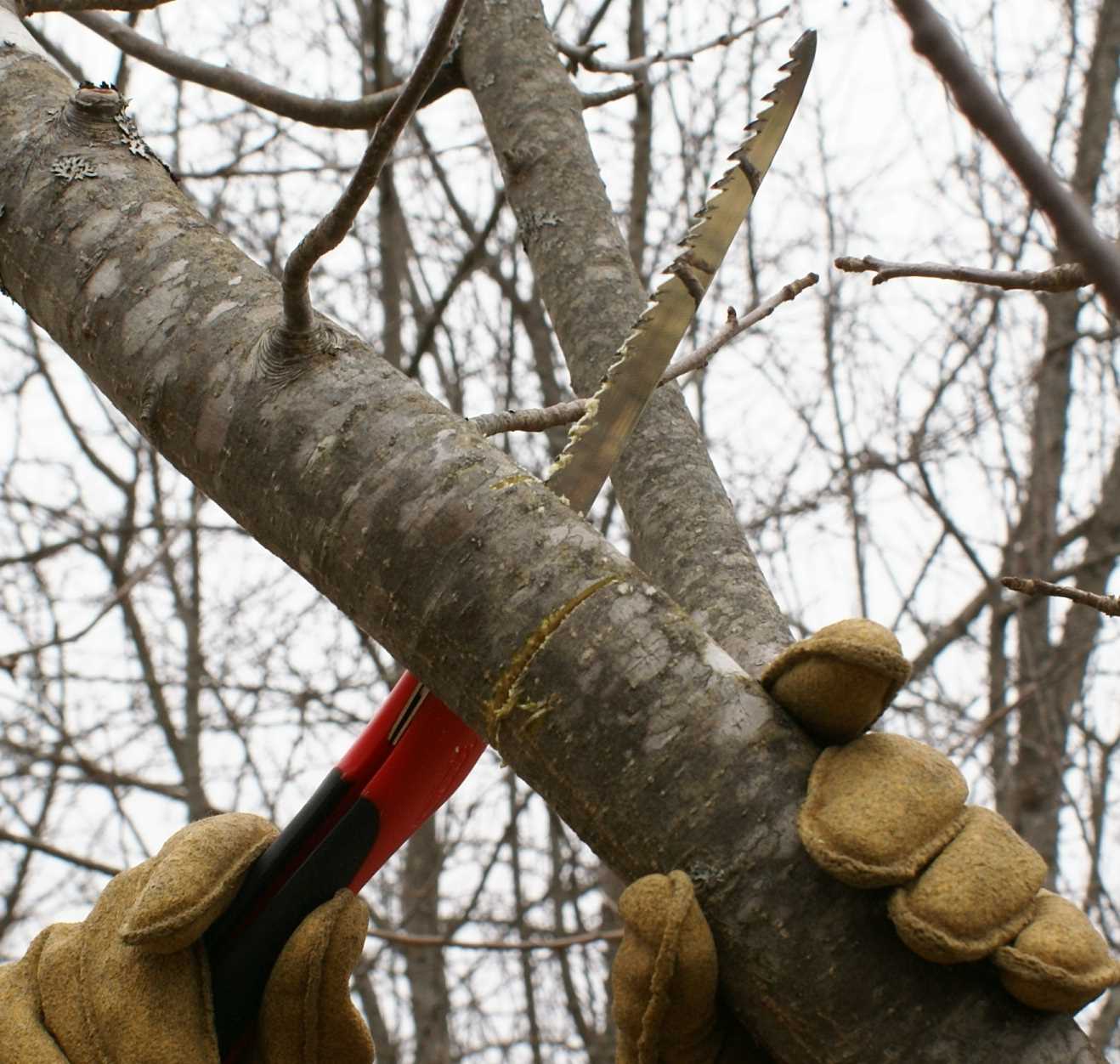

When it comes to pruning apple trees in spring, it is important to have the right tools and equipment to ensure a successful and efficient process. Here are some essential tools that you will need:
- Pruning Shears: A pair of sharp pruning shears is an essential tool for cutting smaller branches and twigs. Look for shears that have a bypass cutting action, as they provide cleaner cuts.
- Loppers: Loppers are used for cutting larger branches that cannot be easily reached with pruning shears. They have longer handles and heavier blades, allowing for more leverage and control.
- Pruning Saw: A pruning saw is necessary for cutting thick branches that cannot be cut with shears or loppers. Look for a saw with a curved blade and sharp teeth for efficient cutting.
- Pole Pruner: If you have taller apple trees, a pole pruner can be helpful for reaching high branches. It consists of a pruning saw or shears attached to a long pole for extended reach.
- Gloves: Protect your hands with a pair of sturdy gardening gloves. They will provide grip, protect against thorns, and prevent blisters.
- Protective Eyewear: Safety glasses or goggles are essential for protecting your eyes from any debris or branches that may fly during pruning.
- Ladder: Depending on the height of your trees, a ladder may be needed for accessing higher branches safely. Choose a sturdy ladder and ensure it is properly secured.
- Pruning Sealant: After making cuts, it is recommended to apply a pruning sealant to the freshly cut branches. This helps to prevent disease and pest infestations.
Having these tools and equipment ready before you begin your spring pruning will make the process much easier and help you achieve the desired results. Remember to always practice proper safety precautions and follow proper pruning techniques for the best outcome.
When is the Best Time to Prune Apple Trees in Spring
Pruning apple trees in the spring is an important task for maintaining the health and productivity of your trees. However, timing is crucial when it comes to pruning. Pruning too early or too late can have negative effects on the tree’s growth and fruit production.
Late Winter to Early Spring
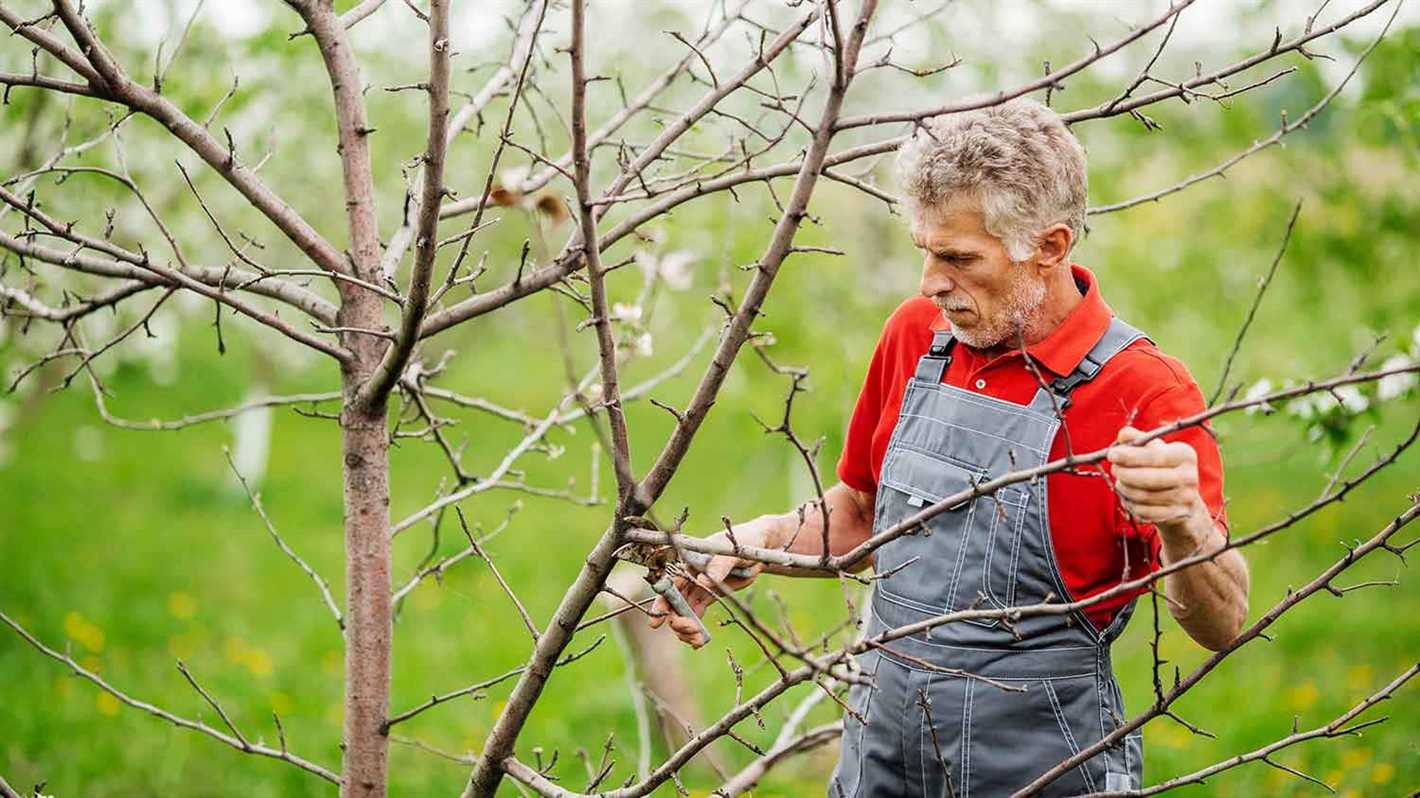

The best time to prune apple trees in spring is typically during late winter to early spring, just before the buds begin to swell. This usually happens when the daily average temperatures reach around 40°F (4°C).
Pruning during this time allows you to see the tree’s structure clearly, as the branches are bare. It also ensures that the tree has enough time to heal and recover before the growing season begins.
Avoid Pruning During Dormancy
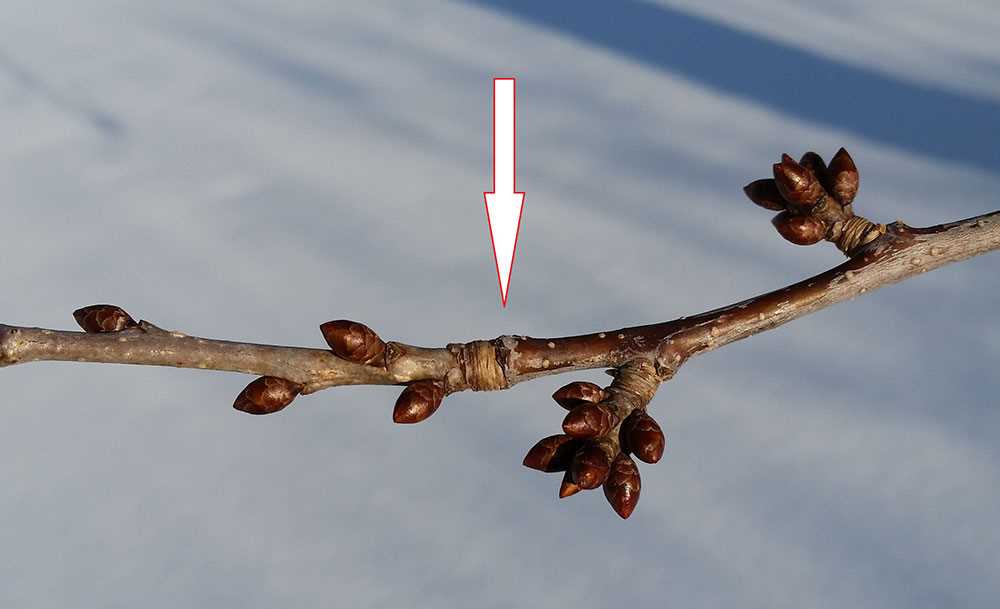

It is important not to prune apple trees during their dormant period, which is typically in the late fall and winter months. Pruning during dormancy can result in excessive sap flow and increase the risk of disease and pest infestation.
Consider Local Climate and Varieties
The exact timing of spring pruning may vary depending on your local climate and the specific variety of apple trees you are growing. Some apple tree varieties may have different growth patterns and may require pruning at slightly different times.
It is always a good idea to consult with local agricultural extension services or experienced apple tree growers in your area to determine the best timing for pruning based on your specific circumstances.
Conclusion
Pruning apple trees in the spring is best done during late winter to early spring, just before the buds begin to swell. Avoid pruning during dormancy and consider the specific climate and variety of apple trees you are growing. By timing your pruning correctly, you can promote healthy growth and maximize the fruit production of your apple trees.
Tips and Considerations for Spring Pruning
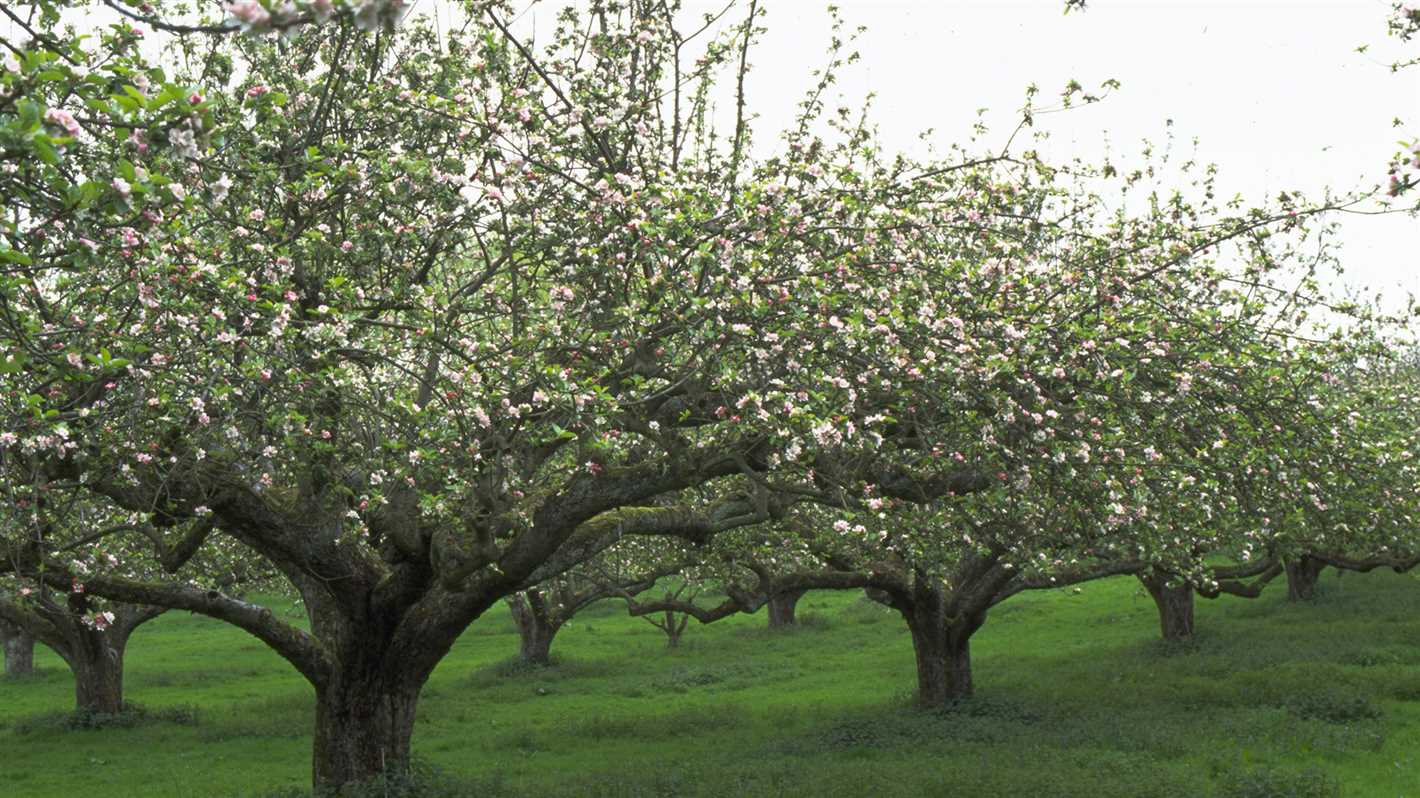

1. Timing is Key
When it comes to spring pruning, timing is crucial. The ideal time to prune apple trees is in late winter or early spring, before new growth begins. Pruning during this period helps promote healthy growth and fruit production.
2. Prune to Shape
One of the main goals of spring pruning is to shape the apple tree. Start by removing any dead, damaged, or diseased branches. Next, focus on creating an open structure that allows sunlight and air to penetrate the canopy. This can help prevent diseases and ensure better fruit production.
3. Identify Fruit and Growth Shoots
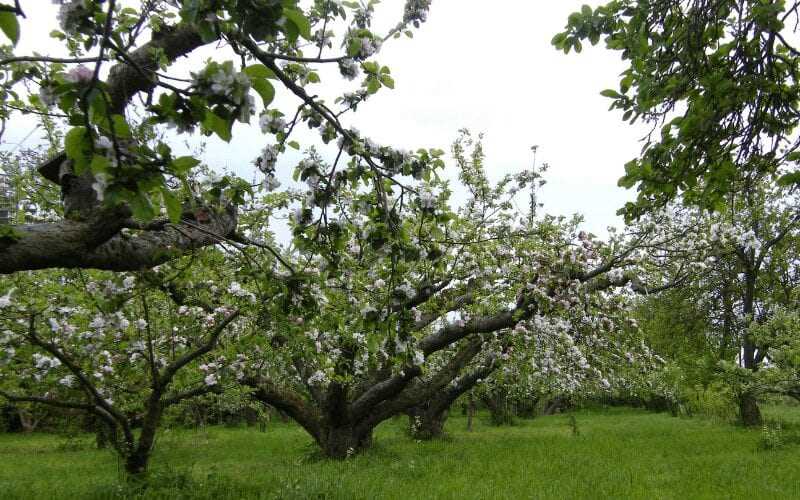

Before making any cuts, it’s important to be able to distinguish between fruit and growth shoots. Fruit buds are plump and round, while growth buds are smaller and pointed. By identifying these shoots, you can make strategic cuts to promote fruit production.
4. Thin Out Excess Growth
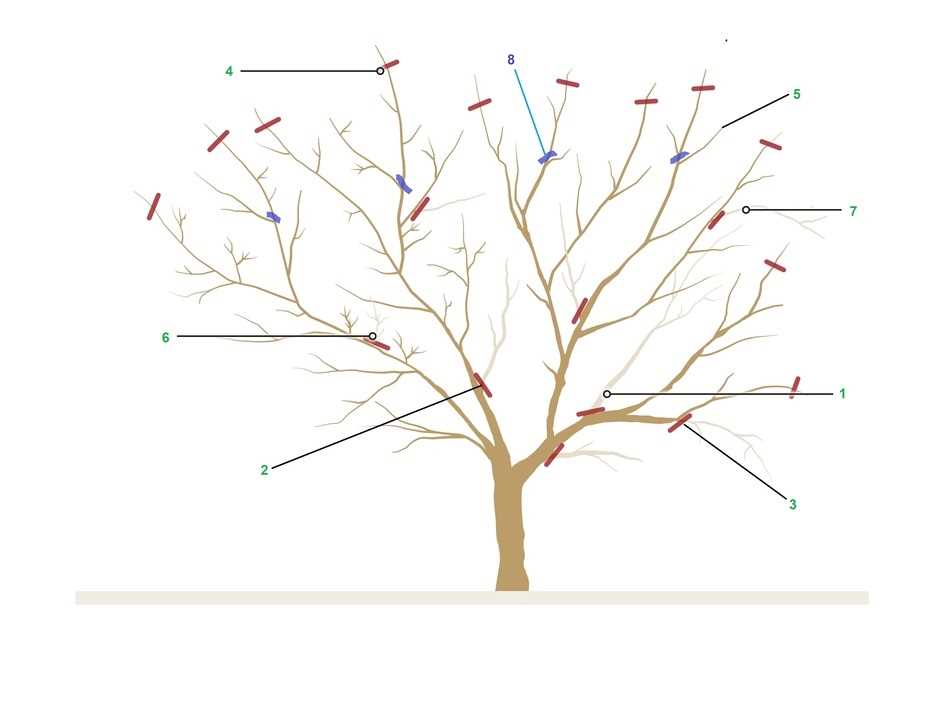

During spring pruning, it’s important to thin out excess growth. This involves removing crowded branches and suckers that drain energy from the tree. Focus on maintaining a balance between fruiting wood and vegetative growth.
5. Consider Disease Prevention
Pruning is not only about shaping the tree, but also about preventing diseases. Be sure to sanitize your pruning tools between cuts to avoid spreading pathogens. It’s also important to remove any branches that show signs of disease or infection, such as cankers or blackened areas.
6. Take Care with Cuts
When making cuts, be careful not to damage the bark or leave stubs. Make clean, angled cuts just above a bud or branch collar. Avoid leaving large wounds, as they can take longer to heal and increase the risk of disease.
7. Don’t Overdo It
While pruning is important for the health and productivity of apple trees, it’s important not to overdo it. Avoid excessive pruning, as this can lead to reduced fruit production and weakened trees. Follow proper pruning techniques and consult a gardening expert if you are unsure.
8. Plan for Annual Pruning
Spring pruning is just one aspect of the overall pruning plan for apple trees. It’s important to plan for annual pruning to ensure the long-term health and productivity of your trees. Regular pruning helps maintain proper shape, balance, and fruit production.
9. Consider Hiring a Professional
If you’re not confident in your pruning skills or have large, mature apple trees, it may be worth hiring a professional arborist or orchardist to do the job. They have the expertise and experience to prune your trees correctly and ensure optimal results.
10. Monitor and Evaluate
After pruning, it’s important to monitor and evaluate the tree’s response. Keep an eye on new growth and overall health. If you notice any issues or imbalances, adjustments may need to be made in future pruning sessions.
By following these tips and considerations, you can effectively prune your apple trees in the spring and set them up for a bountiful harvest.
Question-answer:
How do I know when it’s time to prune my apple trees in the spring?
In general, it’s best to prune apple trees in late winter or early spring, before the new growth begins. You’ll know it’s time to prune when the trees are still dormant and before the buds have started to swell.
What is the purpose of pruning apple trees?
Pruning apple trees has several purposes. It helps to improve air circulation and sunlight penetration, which can reduce the risk of diseases and pests. Pruning also helps to shape the tree and promote strong, healthy growth, as well as remove any damaged or dead branches.
How should I prune the fruiting shoots on my apple tree?
When pruning fruiting shoots on apple trees, you want to focus on thinning them out and removing any weak or crowded branches. Aim to have a nice balance of fruiting wood that allows for good sunlight penetration and airflow.
What are the signs that a shoot on an apple tree is a growth shoot and not a fruit shoot?
Growth shoots on apple trees are usually longer and more slender compared to fruit shoots. They also tend to have smaller buds and may not have any fruit spurs. By contrast, fruiting shoots are usually shorter and thicker, with larger buds and fruit spurs where the fruit will develop.
Can I prune my apple trees during the summer?
While it’s generally best to prune apple trees in late winter or early spring, it is possible to do some pruning in the summer. However, you should avoid heavy pruning during this time, as it can stimulate new growth that may not have enough time to harden off before winter.
What tools do I need to prune my apple trees?
To prune apple trees, you’ll need a few basic tools, including pruning shears for smaller branches, loppers for larger branches, and a pruning saw for very thick branches. It’s also a good idea to have a pair of gloves to protect your hands.
Are there any specific tips for pruning apple trees that have just been planted?
When pruning newly planted apple trees, it’s important to focus on shaping the tree and removing any damaged or crossing branches. You should also prune back the main stem to about 30 inches above the ground to encourage branching and a strong framework.
